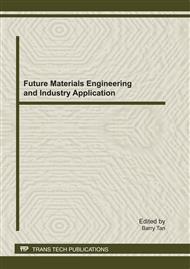p.382
p.389
p.396
p.403
p.409
p.415
p.421
p.428
p.433
Design of a Portable Bioelectrical Impedance Measurement System
Abstract:
Bioelectrical impedance measurement is a widely used biomedical detecting technology. However, most traditional bioelectrical impedance measurement devices are bulky, expensive and lack of flexibility. In order to reduce costs, increase flexibility and maintain similar performance, a portable bioelectrical impedance measurement system was designed in this paper. The measurement front, with an ARM based microcontroller and integrated impedance converter chip as its core device, communicated with the host computer via USB bus. Based on the four-electrode technique, DFT digital demodulation and software calibration and compensation algorithm, the system realized its functions. Experimental results indicate that the system can achieve high precision bioelectrical impedance measurement. With the advantage of high integration and low-cost, the system can be widely used in household healthcare, clinics and biomedical research and testing.
Info:
Periodical:
Pages:
409-414
Citation:
Online since:
October 2011
Authors:
Keywords:
Price:
Сopyright:
© 2012 Trans Tech Publications Ltd. All Rights Reserved
Share:
Citation:


